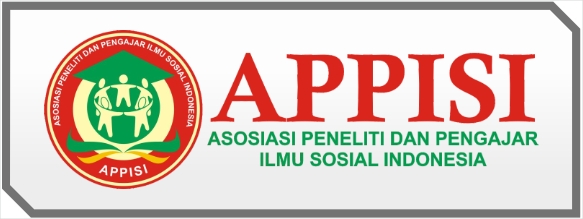Analisis Yuridis terhadap Tindak Pidana Tanpa Hak Menguasai Senjata Tajam dan Perbuatan Pengancaman terhadap Orang Lain
(Studi Kasus Putusan Nomor 1807/Pid.Sus./2023/PN Lbp)
DOI:
https://doi.org/10.59581/jhsp-widyakarya.v2i4.4136Keywords:
Legal Analysis, Criminal Act, Without the Right to Control Sharp Weapons, Threatening ActsAbstract
A weapon is a tool used to injure, kill, or destroy an object. Weapons can be used to attack or defend oneself, and also to threaten and protect. The purpose of this study is to determine the Legal Analysis of Criminal Acts Without the Right to Control Sharp Weapons and Threatening Acts Against Others (Case Study of Decision Number 1807/Pid.Sus./2023/PN Lbp). The type of research used in this study is empirical legal research, namely legal research conducted by directly examining or secondary data consisting of primary legal materials, secondary legal materials, and tertiary legal materials. Data collection methods are techniques or methods that can be used by researchers to collect data. Techniques in designating an abstract word that is not manifested in objects, but can only be seen in its use through: questionnaires, interviews, observations, exams (tests), documentation, and others. Based on the results of the study, Article 2 paragraph (2) of Emergency Law Number 12 of 1951 can be seen exceptions to the provisions of the article above which are given by this law. Sharp weapons used for agriculture or for household chores or other work. From the interview results, it can be explained that one of the driving factors for carrying sharp weapons is if you want to commit theft. This is because stolen objects are usually in a place of security by the owner of the goods, so thieves need certain tools, especially sharp weapons, to be able to more easily control the objects or goods they want to steal. In Decision Number 1807/Pid.Sus./2023/PN Lbp, the Panel of Judges explained that all elements of Article 2 paragraph (1) of Emergency Law Number 12 of 1951 have been fulfilled. One of the elements that is considered is "whoever", which according to Memorie van Toelichting refers to a legal subject who can be held accountable. In this context, the Defendant clearly meets the requirements as a perpetrator of a crime. This is confirmed by the existence of evidence showing that the Defendant did not have a permit to carry the sharp weapon. Based on the results of the research that has been conducted, it can be concluded that: What factors encourage the occurrence of criminal acts without the right to carry sharp weapons and acts of threatening others (Case Study of Decision Number 1807 / Pid.Sus. / 2023 / PN Lbp) From the results of the interview above, it can be explained that criminal groups are the main perpetrators who are often involved in carrying sharp weapons. The main reason criminal groups carry sharp weapons is to be used in criminal acts, such as theft.
References
Abintoro, Prakoso, Kriminologi dan Hukum Pidana. Laksbang Grafika., Yogyakarta: 2013.
Ali, Achmad, Keterpurukan Hukum di Indonesia, Ghalia Indonesia,Jakarta, 2012.
Ali, Mahrus, Dasar-Dasar Hukum Pidana, Sinar Grafika, Jakarta, 2017. Atmasasmita, Romli, Strategi Pembinaan Pelanggar Hukum Dalam Konteks Penegakan Hukum Di Indonesia, Alumni, Bandung, 2012.
Atmasasmita, Romli, Teori Kapita Selekta Kriminologi, Eresco, Bandung, 2014. Bonger, W.A., Pengantar Tentang Kriminologi, Pembangunan Ghalia Indonesia, Jakarta, 2012.
Dekdipbud, Kamus Besar Bahasa Indonesia, Balai Pustaka, Jakarta, 2005. Ediwarman, Monograf Metode Penelitian Hukum (Panduan Penulisan Skripsi, Penelitian, dan Disertasi), Genta Publishing, Medan, 2016.
Farid, Zainal Abidin, Hukum Pidana 1, Sinar Grafika, Jakarta, 2014.
Friedman, Lawrence M., On Legal Development Dalam: Rutgers Law Rivies, Vol. 2, 1969.
Friedman, Lawrence M., The Legal System : A Social Science Perspective, Russel Sage Foundation, New York, 1969.
Fuady, Munir, Dinamika Teori Hukum, Citra Aditya Bakti, Bandung, 2013. Hamzah, Andi, Delik-delik Tersebar diluar KUHP dengan Komentar 1, PT. Pradnya Paramita, Jakarta, 2011.
Huda, Chairul, Dari Tiada Perbuatan Tanpa Kesalahan Menuju Kepada Tiada Pertanggungjawaban Pidana Tanpa Kesalahan,Kencana, Jakarta, 2005,
Ibrahim, Johnny, Teori dan Metodologi Penelitian Hukum Normatif, Bayumedia, Malang, 2013.
Kansil, C.S.T., Pengantar Ilmu Hukum dan Tata Hukum Indonesia, Balai Pustaka, Jakarta, 2012.
Kitab Undang-Undang Hukum Acara Pidana (KUHAP
Rahardjo, Sajtipto, Permasalahan Hukum di Indonesia, Alumni, Bandung, 2015.
Sahetapy, J.E., Paradoks dalam Kriminologi, Rajawali, Jakarta, 2000.
Saleh, Roeslan, Stelsel Pidana Indonesia, Aksara Baru, Jakarta, 1983.
Salman, Otje dan Anthon F. Susanto, Teori Hukum, Mengingat, Mengumpulkan dan Membuka Kembali, Refika Aditama, Bandung, 2005.
Sasongko, Hari dan Lili Rosita, Hukum Pembuktian Dalam Perkara Pidana untuk Mahasiswa dan Praktisi, Mandar Maju, Bandung, 2013.
Sholehuddin, Sistem Sanksi Dalam Hukum Pidana, Ide Dasar Double Track System & Implementasinya, Raja Grafindo Persada, Jakarta, 2013.
Soekanto, Soejono, Pengantar Penelitian Hukum, Universitas Indonesia Press, Jakarta, 2010.
Soesilo, R., Pengantar Hukum Indonesia, Prenhalindo, Jakarta, 2011. Sofyan, Andi, Hukum Acara Pidana Suatu Pengantar Rangkang Education, Yogyakarta, 2013.
Undang-undang No 1 Tahun 1946 Tentang Kitab Undang-Undang Hukum Pidana (KUHP)
Undang-undang No. 2 Tahun 2002 Tentang Kepolisian Negara Republik Indonesia.
Undang-Undang Nomor 12 tahun 1951 Tentang Pengaturan Senjata Tajam.
Wiyata, Latief, Carok: Konflik kekerasan dan harga diri orang Madura, PT. LKIS Aksara Pelangi, Yogyakarta, 2012
Downloads
Published
How to Cite
Issue
Section
License
Copyright (c) 2024 Saidfuddin Saidfuddin, Dani Sintara

This work is licensed under a Creative Commons Attribution-ShareAlike 4.0 International License.













